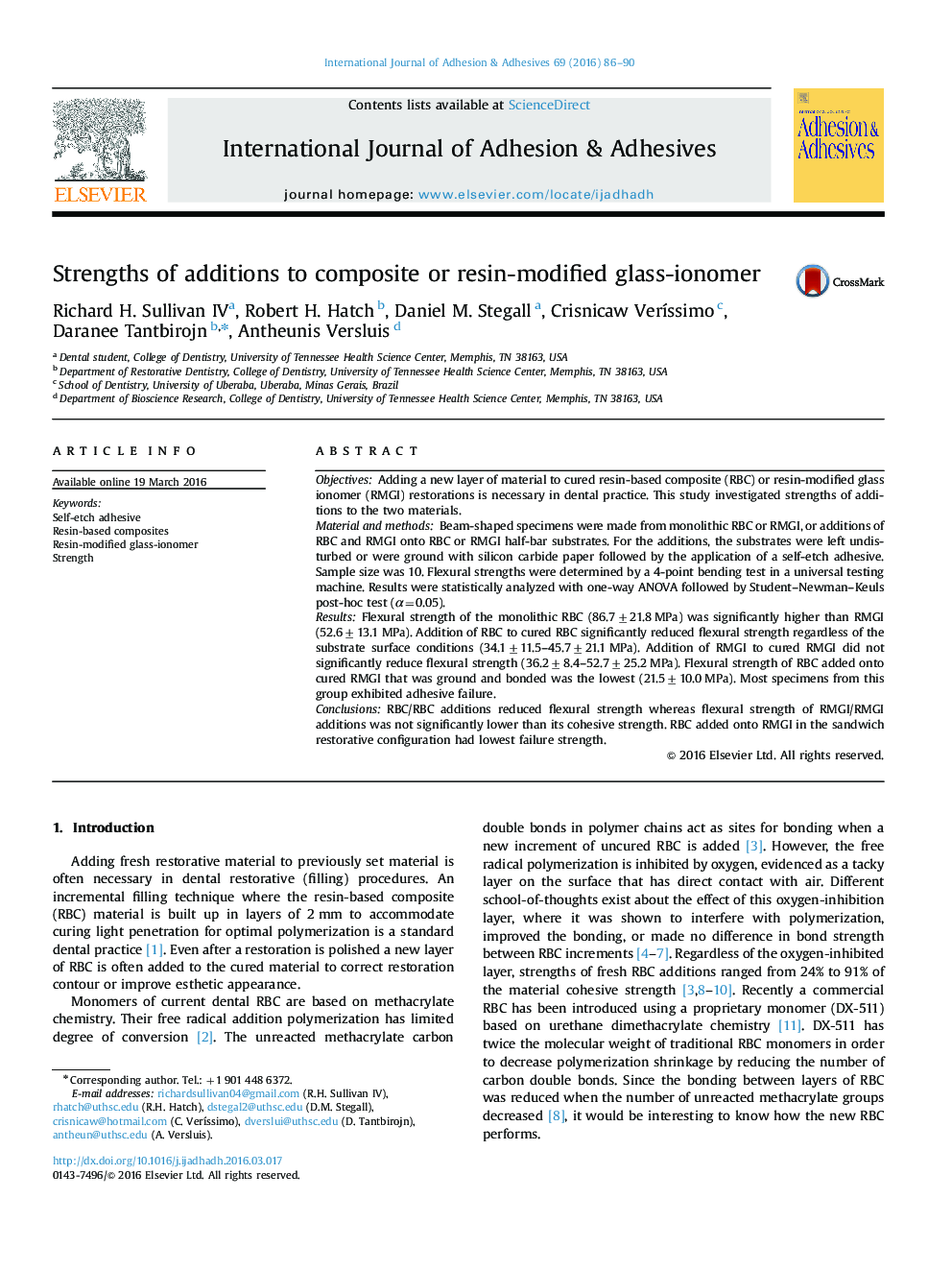| Article ID | Journal | Published Year | Pages | File Type |
|---|---|---|---|---|
| 779840 | International Journal of Adhesion and Adhesives | 2016 | 5 Pages |
ObjectivesAdding a new layer of material to cured resin-based composite (RBC) or resin-modified glass ionomer (RMGI) restorations is necessary in dental practice. This study investigated strengths of additions to the two materials.Material and methodsBeam-shaped specimens were made from monolithic RBC or RMGI, or additions of RBC and RMGI onto RBC or RMGI half-bar substrates. For the additions, the substrates were left undisturbed or were ground with silicon carbide paper followed by the application of a self-etch adhesive. Sample size was 10. Flexural strengths were determined by a 4-point bending test in a universal testing machine. Results were statistically analyzed with one-way ANOVA followed by Student–Newman–Keuls post-hoc test (α=0.05).ResultsFlexural strength of the monolithic RBC (86.7±21.8 MPa) was significantly higher than RMGI (52.6±13.1 MPa). Addition of RBC to cured RBC significantly reduced flexural strength regardless of the substrate surface conditions (34.1±11.5–45.7±21.1 MPa). Addition of RMGI to cured RMGI did not significantly reduce flexural strength (36.2±8.4–52.7±25.2 MPa). Flexural strength of RBC added onto cured RMGI that was ground and bonded was the lowest (21.5±10.0 MPa). Most specimens from this group exhibited adhesive failure.ConclusionsRBC/RBC additions reduced flexural strength whereas flexural strength of RMGI/RMGI additions was not significantly lower than its cohesive strength. RBC added onto RMGI in the sandwich restorative configuration had lowest failure strength.
